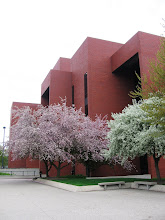University Libraries Provide a New Look for e-Journal Access in the Online Catalog

Users seeking electronic journals through the University Libraries’ online catalog, CardCat, have undoubtedly noticed a change in the way their search results are presented. Formerly, it was common practice to find a record on which multiple formats, print and electronic, were consolidated. Current searchers will discover separate entries for multiple formats, with e-journals now having a record of their own. These records are often identified by the presence of the word “Online” in parentheses following the title.
An even more significant improvement is within the bibliographic record itself. Now each record for an e-journal contains a single, convenient link to the University Libraries’ familiar MultiLink interface. MultiLink searches the Libraries’
e-collections for available full-text and will display multiple options for full-text access when available. Rather than seeing a list of various electronic links, users can now click one easily identified link to take advantage of the complete range of electronic full-text options offered by the University Libraries.
This results from the University Libraries’ relationship with SerialsSolutions, Inc., a Seattle-based e-resource access and management service provider. SerialsSolutions provides the University Libraries with the MultiLink and MultiSearch services. Bibliographic records in CardCat have been integrated into these services. From a user perspective, this results in a unified presentation of e-journal information. Whether users are searching for e-journals through CardCat, Citation Linker, the e-journals list, or MultiSearch, the results are displayed in the same way.
As a result of this integration, there are significant benefits to both users and librarians. All of the University Libraries’ e-journal services are now driven by the same underlying database that is maintained by SerialsSolutions, Inc. Rather than maintaining a separate database of electronic access points within CardCat, serials cataloging personnel can now perform all necessary maintenance within the SerialsSolutions database itself. This kind of “one-stop shopping” dramatically increases the efficiency of e-journal management and should greatly improve users’ success in obtaining electronic full-text.
Labels: cardcat, e-journals, online catalog




